

By Christopher Roberts, Technical Director, Versaperm Limited.
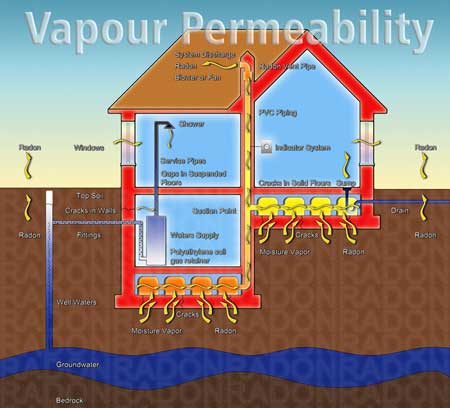 Worldwide, nearly 53,000 people die because of radon every year, that's one every ten minutes. Around 1100 people die in the UK alone – which is more than are killed in drink driving related accidents. Next to smoking it is the biggest cause of lung cancer. Half of all the radioactivity you are exposed to every year comes from radon.
Worldwide, nearly 53,000 people die because of radon every year, that's one every ten minutes. Around 1100 people die in the UK alone – which is more than are killed in drink driving related accidents. Next to smoking it is the biggest cause of lung cancer. Half of all the radioactivity you are exposed to every year comes from radon.
It's easy to ignore. But you shouldn't.
Radon is a naturally occurring colourless, odourless and tasteless radioactive gas produced by the decay of the uranium 238 present in the earth's crust. Outside in the open air it doesn't really cause any problems because it quickly becomes very diluted - but it permeates into buildings, usually through the foundations, where it can sometimes build up to dangerous levels.
Radon is at its worst where the underlying geology is rich in granite, but it is also associated with ironstone, phosphatic rocks and shales rich in organic material. To a lesser degree it can also be associated with common rocks such as limestone.
According to figures from the HPA over 10% of homes tested in 2007 recorded radon levels that were higher than the level where action should be taken, which is set at 200 Bq m-3 in the UK.
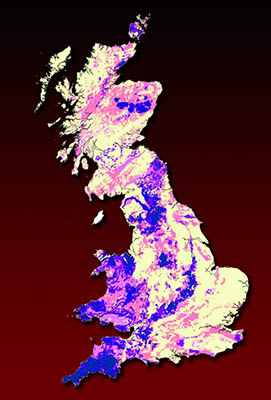 A quick first step to see if the background level of radiation in your area is available on http://www.ukradon.org/information/ukmaps, which is a part of the UK Government's Public Health England organisation.
A quick first step to see if the background level of radiation in your area is available on http://www.ukradon.org/information/ukmaps, which is a part of the UK Government's Public Health England organisation.
So what can you do about it? – well there are several remedial options based around increasing ventilation or installing some form of radon sump – but prevention is, to my mind, far better than cure and so I am going to concentrate on geomembranes and how to determine the differences between them to see how effective they are.
Geomembranes are laid as part of the foundations of a building and they work simply by acting as barrier to the radon, normally diverting it away from the home and into the general atmosphere. Geomembranes are also used as barriers over other types of contaminated land, where effectively they seal the contamination away from the building. A geomembrane may need to act as a barrier to both liquids and various gases.
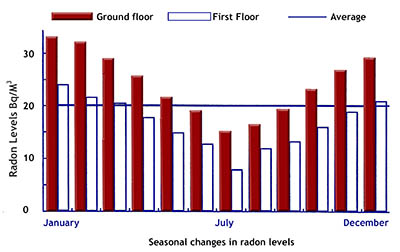 Naturally it is a little more complicated than it sounds as gases, including radon, can actually seep (or permeate) through any material and different membranes simply work better for some gases than for others. In fact one study of the barrier properties of 126 different building barrier film materials showed that the best of them was around a million times more effective at keeping radon out that the worst, despite the fact that most building barriers are roughly equivalent when it comes to liquid water.
Naturally it is a little more complicated than it sounds as gases, including radon, can actually seep (or permeate) through any material and different membranes simply work better for some gases than for others. In fact one study of the barrier properties of 126 different building barrier film materials showed that the best of them was around a million times more effective at keeping radon out that the worst, despite the fact that most building barriers are roughly equivalent when it comes to liquid water.
So, exactly what is permeability? Technically it's the ability of a gas or vapour to seep, or "permeate" molecule by molecule through any material. To explain it in more practical terms, if you have a membrane with water or radon gas etc. on one side you want to keep them there - but the trouble is that both the radon the liquid's vapour can pass through the barrier and reappear on the other side, though at often dramatically different rates. You can't prevent it happening, but you can reduce it to a level where it doesn't cause a problem. It isn't always easy.
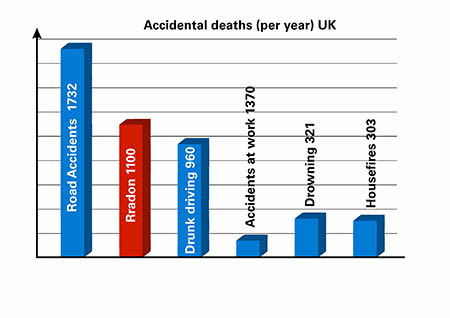 Sadly, every material acts in a different way and one that is good at keeping water out may be very poor at keeping radon or other contaminates out. Worse than that, different test techniques can lead to different answers so we need to understand a little about what is measured and why.
Sadly, every material acts in a different way and one that is good at keeping water out may be very poor at keeping radon or other contaminates out. Worse than that, different test techniques can lead to different answers so we need to understand a little about what is measured and why.
The first obvious technique is simply using a Geiger counter to measure the radiation level – but this is subject to all sorts of problems as different situations can change the readings – even having a store of milk nearby could make a difference as sometimes milk is more radioactive than at others – figures produced by STUK showed that, in 1964, milk was 12 times more radioactive than in 1960, 1984 or 2012.
Another common system is to use a kit that accumulates radon's radioactivity in the home over a period of several months – and although accurate, if the house is already there it is too late for a geomembrane!
The most widely used system to measure the permeability of membranes has numerous variations – but basically they mainly use a similar method. Two chambers (or two parts of a single chamber) are isolated and sealed with the geomembrane between them. One side is exposed to radon gas, which then permeates through the membrane to the other side where it either collects or is swept up in a flow of gas and taken past a sensor – for example a mass spectrometer, which effectively counts the numbers of radon atoms that have passed through the barrier.
Measurements that involve radioactivity can only be carried out in specially regulated laboratories – and this adds quite significantly to the costs – especially if measurements need to be repeated many times to show the variations over a temperature range, or throughout diurnal or seasonal cycles. This becomes particularly costly when developing new geomembranes due to the need to test numerus variations in material and construction.
Most of today's membranes are laminar and built up with different material layers – some layers are for strength, some for puncture resistance and some to act as a barrier to radon or other contaminates.
Because of this a clever technique has been evolved to reduce costs. This involves testing, for example, only one sample out of five against radon. The other four are tested (at a far lower cost to the customer) using a different noble gas as a proxy, methane is commonly used as it has roughly the same size molecule as radon and seems to give similar results. The radon tests act as a check to ensure the results are both related and reliable.
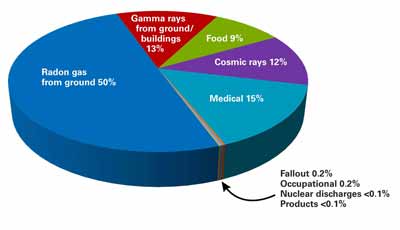 This allows a manufacturer to develop their new barrier materials at a far lower cost – and once the materials and manufacturing techniques have been developed, the barrier can simply be re-tested to ensure it complies with the appropriate regulations.
This allows a manufacturer to develop their new barrier materials at a far lower cost – and once the materials and manufacturing techniques have been developed, the barrier can simply be re-tested to ensure it complies with the appropriate regulations.
In the UK the appropriate regulation is BR211 (2015) which covers Wales, Scotland and Northern Ireland. It includes guidance for all building types including extensions, conversions and refurbishment and even identifies the areas of England, where measures should be taken.
The radon has been much under-publicised over the years – despite the fact that it is an international killer and much work had been carried out both at government and international levels. The World Health Organisation has even produced a 94 page handbook that can be downloaded from its website.
You can't see, smell or taste radon but when builds up in the home it can be a real killer – it's not been called the Grim Seeper for nothing!